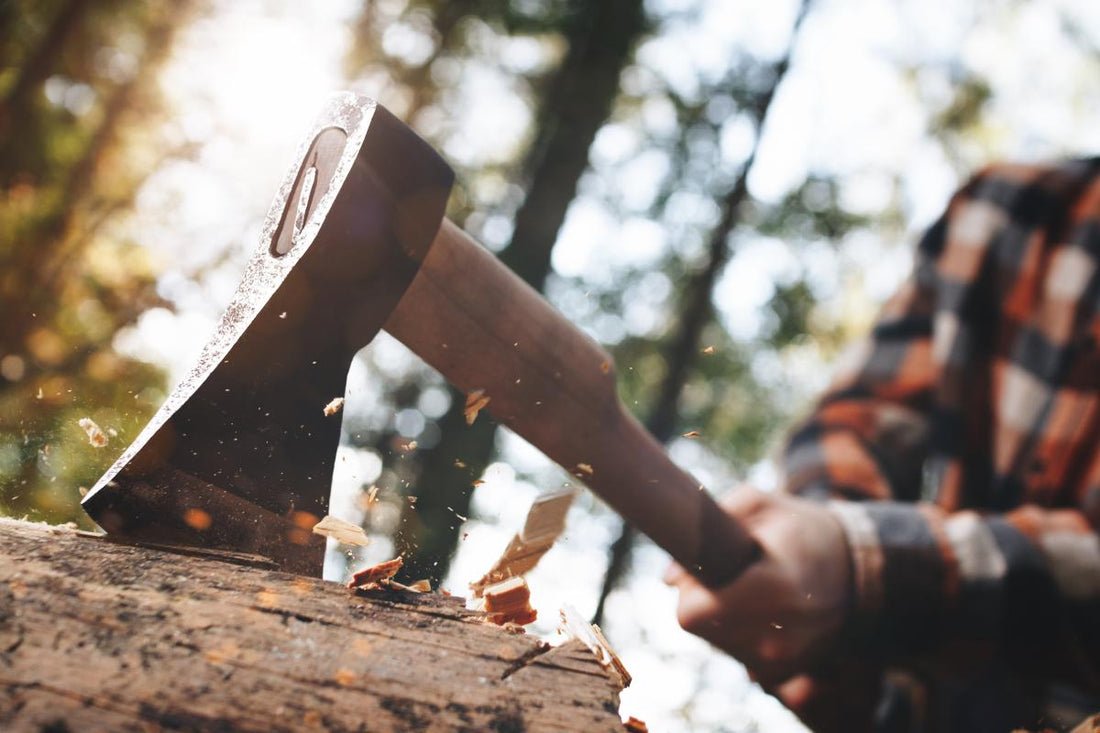
How to Sharpen an Axe Blade at Home: Step-by-Step Guide with Selectool
Share
A dull axe can be dangerous and inefficient. Whether you're splitting firewood or working outdoors, a sharpened axe blade is crucial for both performance and safety. This guide will walk you through multiple methods for sharpening an axe, including using the all-in-one Selectool axe sharpener—a compact, powerful tool designed to make sharpening simple and effective.
Why a Sharp Axe Matters?
Chopping wood with a dull blade wastes energy and increases the risk of injury. A sharp axe:
- Reduces strain on your body
- Improves cutting precision
- Minimizes the risk of dangerous slips
That’s why it’s important to sharpen your axe regularly with a reliable axe sharpening tool.

Understanding Your Axe
Before you sharpen, get familiar with the parts:
- Blade/Cutting Edge
- Bevels
- Handle
- Eye (the hole where the handle connects to the head)
Knowing how each part functions helps you sharpen more effectively and avoid mistakes.
Tools You’ll Need
To sharpen an axe traditionally, you’ll need:
Sharpening stone (coarse and fine grit)
- Honing oil
- Steel wool or grit sandpaper
- Leather strop
- Gloves and safety glasses
OR just one compact tool: Selectool, the ultimate knife and tool sharpener.
How to Sharpen an Axe with Traditional Methods:
-
Clean the Axe
Remove dirt, sap, or rust with steel wool or a cleaning pad. -
Secure the Blade
Clamp it to a workbench or place it securely in a vise. -
Find the Right Angle
Most axes are sharpened between 25–30 degrees depending on the task. -
Use Sharpening Stone
Apply honing oil, then slide the blade across the stone in smooth strokes. -
Alternate Sides
Repeat evenly on both sides to maintain balance. -
Polish and Strop
Finish with fine grit or a leather strop for a razor-sharp edge.
How to Sharpen an Axe with Selectool
If you're looking for a faster, safer way—Selectool simplifies the process:
Place Selectool on a flat surface
Insert the axe blade into the angled guide slot
Draw the blade through 4–6 times using light, even pressure
Repeat until sharp, then polish with the included strop (optional)
No complicated setup. No extra gear. Just one compact, American-made axe sharpener that works.
Selectool vs. Professional Sharpening
| Criteria | Professional Sharpening | Selectool |
|---|---|---|
| Cost per session | $10–$20 | One-time $33.99 |
| Speed | 1–2 days turnaround | Instant at home |
| Portability | No | Yes |
| Works on all blades? | Not always | Yes |
| Requires skill? | Yes | No |
👉 Order Selectool Now – sharpen your tools anytime, anywhere.

